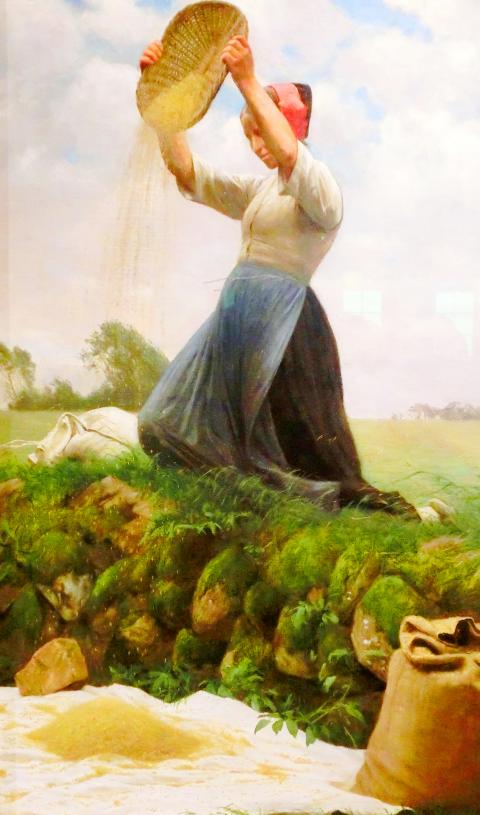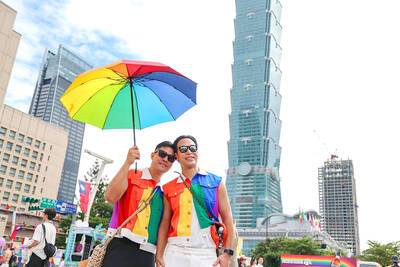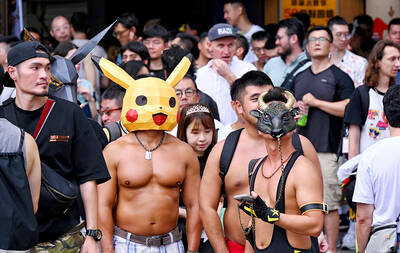Chinese practice
去蕪存菁
discard the weeds, retain the flowers

Photo: Wikimedia Commons
照片:維基共享資源
(qu4 wu2 cun2 jing1)
《四庫全書》是中國史上規模最大的一套叢書,收錄了歷代三千四百多部書,由清乾隆皇帝所任命編纂,於一七七三年開始進行,一七八二年完成,且複製了一些副本,但僅有四部留存下來,其中一部藏於台北國立故宮博物院。
《四庫全書》分為四個部分:經(經典)、史(歷史和地理)、子(哲學)、集(文學選集)。
桂林府知府李文藻(西元一七三○~一七七八年)亦為作家與藏書家,他受《四庫全書》總纂官紀昀(西元一七二四~一八○五年)所託編纂經部。《周易述》(易經評論)為經部所收錄的其中一本書。李文藻指示要刪除《周易述》目錄中過於繁複且與原典無太大關係的部分,他用的語句是「苟汰其蕪雜,存其菁英」,此即為成語「去蕪存菁」的由來。
英語中和「去蕪存菁」意義相當的說法是「separate the wheat from the chaff」。chaff這個字源於中古英語chaf和古英語ceaf,意思是「外殼」,它指的是穀物外層乾燥、難消化的糠?。在古時,農民會對麥子進行「揚穀」,即讓它吹風,這樣糠?就會被吹走,而留下穀粒。
聖經中的〈詩篇〉第一章第四節,便用此作為譬喻,說惡人會像糠?一樣被風吹散。
因此「separate the wheat from the chaff」便指將有用或有價值的東西與無用或無價值的東西區別開來。
(台北時報編譯林俐凱譯)
你這篇文章很有創意,但就是龐雜了點,只要稍加剪裁、去蕪存菁,就會是篇佳作。
(Your article is very creative, albeit a bit rambling. Trim it a bit, get rid of the superfluous parts, and it will be a really good piece.)
簡報要去蕪存菁、把不相關的資訊拿掉,才能夠有效傳達重點。
(The presentation needs to be concise, take away all the irrelevant data. Only then will people get your point.)
英文練習
separate the wheat from the chaff
The Siku Quanshu, or Complete Library in Four Branches of Literature, is the largest collection of books in Chinese history. Covering more than 3,400 titles from successive dynasties, it was commissioned by the Qianlong emperor of the Qing Dynasty. Work on the project started in 1773. It was completed in 1782. Several copies were made, but only four remain, one of those being in the collection of the National Palace Museum in Taipei.
The collection was divided into four parts: Chinese classics (jing), Chinese histories and geographies (shi), Chinese philosophy (zi), and Chinese literature anthologies (ji).
The writer and bibliophile Li Wenzao (1730-1778), a government sub-prefect in Guilin prefecture, was commissioned by Ji Yun (1724-1805), one of the project’s chief editors, to work on the jing collection of Chinese classics. One of the titles was the zhouyi shu (Comments on the Book of Changes). Li gave a direction to remove the parts of the table of contents that were overly complicated, and that had little to do with the original classic. He used the phrase 苟汰其蕪雜,存其菁英, “discard the weeds and retain the flowers,” and from this we get the proverb 去蕪存菁.
The English equivalent for this proverb is “separate the wheat from the chaff.”
The word “chaff” derives from Middle English chaf and from Old English ceaf, meaning “husk.” It refers to the dry, indigestible casing around cereal grain seeds. In ancient times, farmers would “winnow” wheat, meaning to expose it to wind so that the chaff would blow away, leaving only the grains.
In fact, the Bible makes use of the metaphor, with Psalm 1:4, for example, comparing wicked people to chaff that the wind will drive away.
To “separate the wheat from the chaff,” then, means to distinguish between the useful or worthwhile from the useless or valueless.
(Paul Cooper, Taipei Times)
This first stage is about separating the wheat from the chaff. There will be many excellent entries, but also a lot of rubbish.
(第一個階段是汰粕存菁。這裡有很多優秀的作品,但也有很多糟粕。)
Most of this is not worth listening to. It’s just chaff. You need to separate out the good parts.
(這大部分是不值一聽的,就只是些廢話。你得要從中篩選出好的部分。)

A: The 23rd Taiwan Pride parade will be marching again on Saturday, Oct. 25. B: Will the parade kick off from Taipei City Hall Plaza as usual? A: Yup, and there will be over 110 LGBT-themed booths at the Rainbow Festival in the plaza. B: The organizer is reportedly teaming up with Japanese, South Korean and other international groups. A: So we are likely to see more foreign visitors from across the world. Hopefully, this year’s parade can smash the record of 200,000 marchers set in 2019. A: 第 23 屆台灣同志遊行本週六即將登場。 B: 遊行還是從台北市政府前廣場出發嗎? A: 對,廣場「彩虹市集」還有超過

A: As the Taiwan Pride parade enters its 23rd year, the nation also celebrates the sixth anniversary of the legalization of same-sex marriage. B: However, a poll showed that support for same-sex marriage slightly dropped to 54.3 percent from last year’s 56.5 percent. A: The government is wavering on whether to extend the Assisted Reproduction Act to same-sex couples, leading to public doubts. B: Since US President Donald Trump took office in January, his oppression of Diversity, Equity and Inclusion (DEI) programs has also frustrated the global LGBT community. A: Let’s join the parade in Taipei tomorrow to

California will phase out certain ultra-processed foods from school meals over the next decade under a first-in-the-nation law signed on Oct. 8 by Gov. Gavin Newsom. The law seeks to define ultra-processed foods, the often super-tasty products typically full of sugar, salt and unhealthy fats. The legislation requires the state’s Department of Public Health to adopt rules by mid-2028 defining “ultra-processed foods of concern” and “restricted school foods.” Schools have to start phasing out those foods by July 2029, and districts will be barred from selling them for breakfast or lunch by July 2035. Vendors will be banned from providing the “foods

Have you ever bought a new smartphone and suddenly found yourself dissatisfied with your perfectly fine headphones? Before long, you’ve purchased premium wireless earbuds, a protective case and a fast-charging station. What begins as a single acquisition snowballs into a shopping spree—this is the Diderot effect in action. Named after the 18th-century French philosopher Denis Diderot, the Diderot effect originates from an essay he wrote. In it, he recounted receiving a luxurious robe as a gift. As lovely as it was, the robe clashed with the rest of his humble belongings. One by one, he replaced his possessions to match the